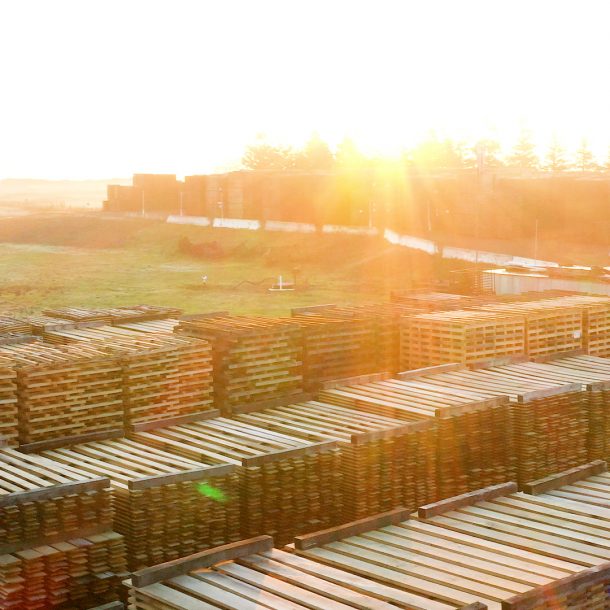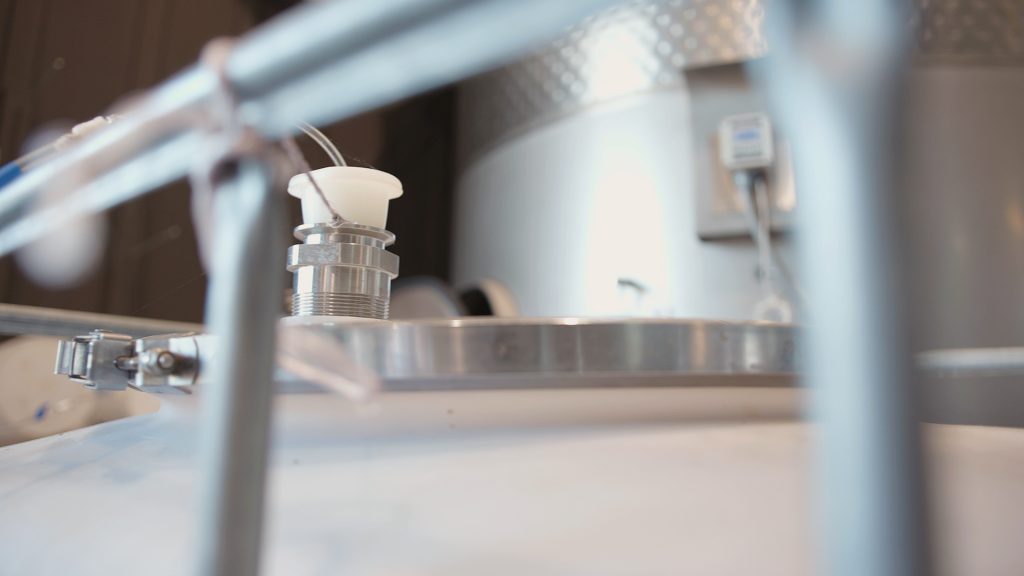
lets take this relationship to the next level!
In my twisted brain, I see modifying your winery to take full advantage of barrel alternatives a lot like asking your girlfriend to move in with you. You’ve been dating for a while now and it just makes sense that you show your commitment and take that next big step. But what alterations or adjustments do you need to make to your bachelor pad to help with this transition? Other than picking your dirty clothes off the floor – she’s asked you nicely several times and the hamper is literally 5 feet away. The great news is that modifying your winery is actually a lot easier than modifying your behaviors or your bachelor pad. Some equipment and modifications are relatively easy to employ and fairly inexpensive, yet others can take a bit more engineering and financial resources.
d-rings are your friend
One of the easiest ways to modify your existing tanks to accommodate barrel alternatives is to install stainless steel chain or cables. This can be done by welding d-rings directly to the inside of the tank every 3-4 feet, threading the chain or cable through the rings and connecting the cable/chain end-to-end. The rings should be installed 4-5 feet above the bottom of the tank to keep the oak out of the lees. Connecting the cable or chain to itself ensures that the downward force of the oak is spread equally around the tank.
When using stave fan-packs or any format in an infusion bag the stainless chain does the best job of spacing your oak out and not sliding together as they would on a cable. When spaced out, the oak will be allowed to float freely and fully extract into the wine, giving the winemaker a much better result.
Is there a holy grail?
The holy grail of using barrel alternatives with wine has always been and will continue to be the replication of aging or fermenting in a barrel. With that being said, winemakers should think about the conditions inside the barrel that impact the wine. Obviously, the oak itself has a tremendous impact and luckily, that can be very precisely dialed-in with barrel alternatives. Temperature, exposure to oxygen, and the presence of lees can also have a significant impact on the wine.
tiny bubbles
The use of Micro Oxygenation (Micro-Ox) to continuously dose pure oxygen into the wine to mimic the gradual introduction of oxygen that happens in barrels is a powerful tool for achieving the best results when using barrel alternatives. Micro-Ox helps to integrate the oak into the wine, softens tannins, can improve aromatics and allows the wine to “evolve” in tank. Several companies make units, and their costs vary from a few thousand to tens of thousands based on the number of tanks needing to be serviced at once and the scope of installation. Single-tank portable units are probably the most economic choice for those starting out.
Stir the Lees, but do it carefully
Lees stirring is a time honored and proven winemaking practice that has been employed for hundreds of years. Stirring juice lees before fermentation has been proven to add depth and complexity in white wines like Sauvignon Blanc and Rose’s as well. Sur Lie (on the lees) aging is an old-world technique in Chardonnay production in which the yeast lees are periodically stirred in barrel. This process results in a softer mouthfeel, improved texture and weight and additional complexity from the breakdown of the yeast. The lees also help to absorb oxygen during aging and can act as a fining agent.
There are several ways to stir lees in tanks. One way has been with the use of “snakes” which are hoses that lie at the bottom of the tank and create a sweeping motion when wine is circulated through them which kicks up the lees into the wine. I am not a big fan of these as I have seen the use of snakes cause premature degassing and oxidation of the wine especially at the large scale wineries. However, they are relatively cheap, and a small producer could probably employ the use of snakes with great success if monitored closely. Other stirring techniques include the use of mixers that are inserted through a 2” or 3” ball valve or mixers permanently installed through the side of the tank. Both of these are relatively effective unless the lees have been allowed to settle for too long and as long as you keep the oak away from the blades. I have seen rack arms used fairly successfully where the winery circulates from the bottom valve and back into the tank through the rack arm pointed down at the bottom of the tank. This does a fairly decent job but only really gets a small portion of the lees back into solution and the risk of oxidation and/or contamination is a concern. The absolute best lees stirring in a tank I have seen has been from the installation of a stirring device that is mounted to the bottom of the tank or inserted through the top of the tank and connected to a programmable controller. This “Batonneur” (lees stirring) device can be programmed to turn on and off at regular intervals throughout the day keeping the lees in suspension without having to touch the tank and without degassing the wine. This device can also be used when a wine (white or red) is being aged with barrel alternatives – with or without Micro-ox to keep the wine homogenous and help accelerate the evolution of oak into the wine.
the goldilocks zone
And finally, maintaining proper storage temperature while using barrel alternatives is extremely important for success. Your new housemate will definitely appreciate your attention to the temperature of your shared home, and you will be pleased with the end result. Finding this “goldilocks” zone could mean the difference between success and you sleeping on the proverbial winemaking couch. Too cold could mean your wine relationship never evolves and you eventually part ways and spend the rest of your life wondering what could have been. Too hot could mean your wine relationship moves too quickly, you miss the warning signs (of course) things deteriorate past the point of no return with the end result leaving a bad taste in your mouth.
Whatever reason you have for utilizing barrel alternatives – cost, efficiency, sustainability, quality, winestyle, or staffing, it’s important to know that there are winery modifications, techniques, and technologies that can help ensure a successful and happy relationship for many years to come.
–Jason Dodge, Managing Director, Winemaking.



